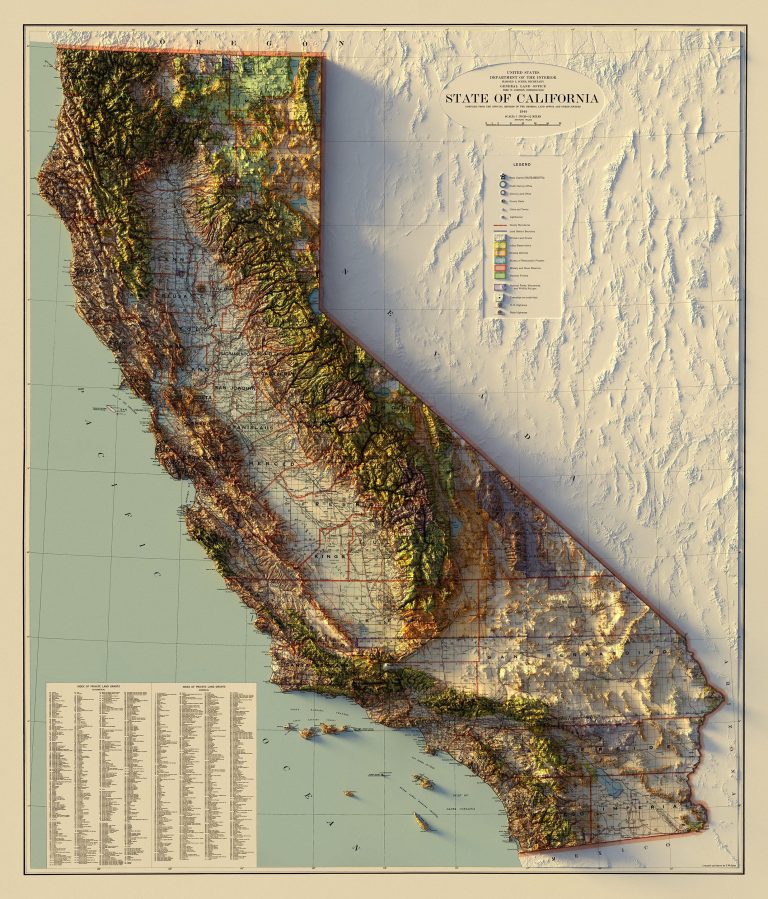Modesto, a charming city located in the heart of California’s Central Valley, boasts a unique topography that has played a significant role in shaping the patterns of accidents within its borders. As a city known for its agricultural richness and growing urbanization, Modesto’s topographical features contribute to the occurrence of accident hotspots that demand a closer examination. In this article, we will delve into Modesto’s topography, its various facets, and how it influences the emergence of accident-prone areas.
The Geographical Context
Understanding Modesto’s accident hotspots requires understanding its geographic setting. Situated in Stanislaus County, approximately 90 miles east of the San Francisco Bay Area, Modesto serves as a hub of transportation routes spanning California. Because this region features major roads and rail routes intersecting, residents and visitors must remain mindful of potential risks when in this region; for guidance in times of need, they can turn to Accident.com, which offers legal guidance.
- Flat Terrain
Modesto is known for its flat terrain, which is common in Central Valley cities. This results in Modesto being situated within the vast alluvial plain of San Joaquin Valley, responsible for the optimal conditions for agriculture and urban development. Although this flatness offers numerous benefits for farming and infrastructure development purposes, it also creates traffic jams and accident rates.
- Agricultural Landscape
Modesto relies heavily on agriculture as the foundation of its economy, with fertile farmlands surrounding the city. Almonds, walnuts, peaches, and grapes dominate Modesto’s expansive agricultural landscape and have led to the establishment of an extensive network of rural roads and highways that facilitate goods transportation as well as accessing farms. These roads often intersect more heavily traveled routes and provide their own set of challenges to drivers.
Factors Contributing To Accident Hotspots
Several factors, directly or indirectly related to Modesto’s topography, contribute to the emergence of accident hotspots within the city. Understanding these factors is crucial for devising strategies to reduce accidents and enhance road safety.
- High Traffic Density
Modesto’s central location in California’s Central Valley makes it a transportation hub, resulting in high traffic density on its roads. Major highways like State Route 99 and State Route 132 pass through or near the city, carrying commuters, truckers, and travelers. The convergence of various traffic streams increases the likelihood of accidents, particularly at busy intersections and highway interchanges.
- Intersection Challenges
Flat terrain often leads to long, straight roads that intersect at right angles, making intersections a common site for accidents. Modesto’s grid-like road layout and high traffic volumes result in numerous intersections with the potential for collisions. Busy intersections like McHenry Avenue and Standiford Avenue witness a significant number of accidents due to the convergence of traffic from multiple directions.
- Rural Roads And Agri-Tourism
The extensive rural road network connecting Modesto to its surrounding agricultural areas is essential for the region’s agricultural economy. However, these roads can pose challenges for drivers unfamiliar with the area. Many accidents occur when urban residents venture into rural areas for agri-tourism activities, such as visiting orchards and wineries. The combination of narrow roads, unfamiliar terrain, and slower-moving vehicles can lead to accidents.
- Weather And Visibility
The Central Valley features a Mediterranean climate, meaning summers can be intensely hot and dry, while winters tend to be cool and damp. Fog can significantly decrease visibility on roads during winter, significantly increasing accident risks. Flat terrain worsens this problem, permitting prolonged fog cover over both rural and urban regions.
III. Accident Hotspots In Modesto
Several locations in Modesto have earned a reputation as accident hotspots due to the convergence of various factors. Identifying these hotspots is essential for implementing targeted safety measures and raising awareness among drivers.
- State Route 99
State Route 99, one of California’s major north-south highways, is a focal point for accidents in Modesto. The high traffic volume and multiple exits and entrances result in a higher likelihood of collisions. Notable accident-prone areas along SR-99 include the Briggsmore Avenue and Standiford Avenue interchanges.
- Mchenry Avenue
McHenry Avenue, a prominent north-south artery in Modesto, has earned a reputation for accidents, especially at busy intersections. The intersection of McHenry Avenue and Standiford Avenue is particularly notorious for collisions. The high traffic volumes, multiple lanes, and frequent stops make this area a hotspot.
- Rural Roads
While rural roads are essential for the region’s agriculture, they are also accident-prone, particularly for inexperienced or unaware drivers. Locations near orchards, vineyards, and agri-tourism sites often witness accidents due to narrow roads, slow-moving agricultural vehicles, and sudden stops.
- School Zones
School zones in Modesto, like those in many cities, are accident hotspots during drop-off and pick-up times. Congested traffic, impatient drivers, and children crossing the streets create conditions conducive to accidents. Several schools in Modesto have implemented safety measures such as reduced speed limits and designated crossing areas to mitigate the risks.
Safety Measures And Initiatives
Addressing accident hotspots in Modesto requires a multi-faceted approach that considers both infrastructure improvements and public awareness campaigns.
Infrastructure Improvements
Intersection Upgrades: Retrofitting accident-prone intersections with modern safety features such as traffic signals, roundabouts, and improved signage can reduce the risk of collisions.
- Road Maintenance: Regular road maintenance and resurfacing can help improve road conditions and reduce hazards caused by potholes and worn-out markings.
- Enhanced Lighting: Improved street lighting in high-risk areas can enhance visibility, especially during low-light conditions.
- Pedestrian Safety: Implementing pedestrian-friendly infrastructure, such as crosswalks, sidewalks, and pedestrian signals, can reduce accidents involving pedestrians.
- Public Awareness Campaigns
- Safe Driving Education: Public education campaigns can raise awareness about the most common causes of accidents, including distracted driving, speeding, and driving under the influence.
- Agri-Tourism Safety: Informing urban residents about the challenges of driving in rural areas and providing safety tips for agri-tourism activities can reduce accidents in these areas.
- School Zone Safety: Collaboration between schools, law enforcement, and local authorities can help implement and enforce safety measures in school zones.
- Fog Awareness: Public campaigns that educate drivers about safe driving practices in foggy conditions can reduce accidents during low-visibility situations.
Conclusion
Modesto’s unique topography, characterized by flat terrain and an agricultural landscape, plays a significant role in the emergence of accident hotspots within the city. The convergence of high traffic density, busy intersections, rural roads, and weather-related challenges contributes to the accident-prone areas in Modesto. Addressing these issues requires a combination of infrastructure improvements and public awareness campaigns to enhance road safety. By identifying and addressing accident hotspots, Modesto can work towards a safer and more secure transportation environment for its residents and visitors.


